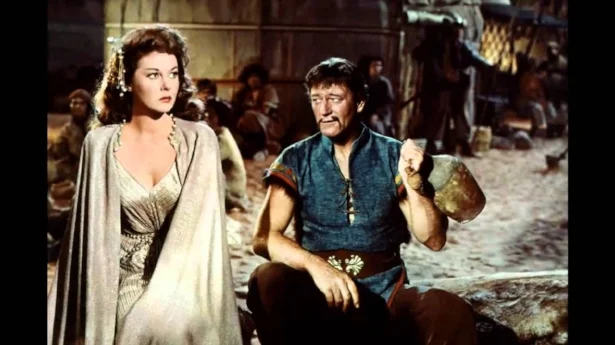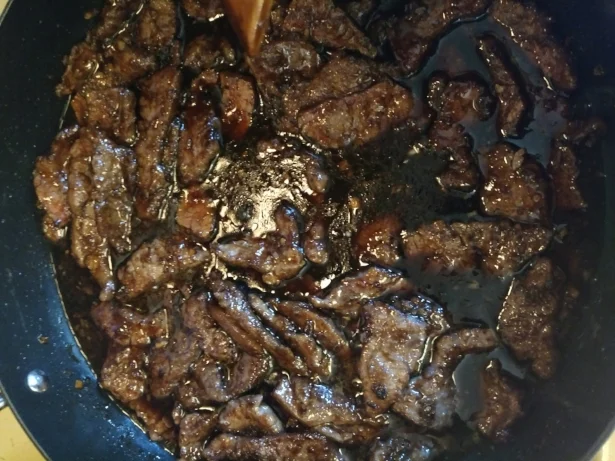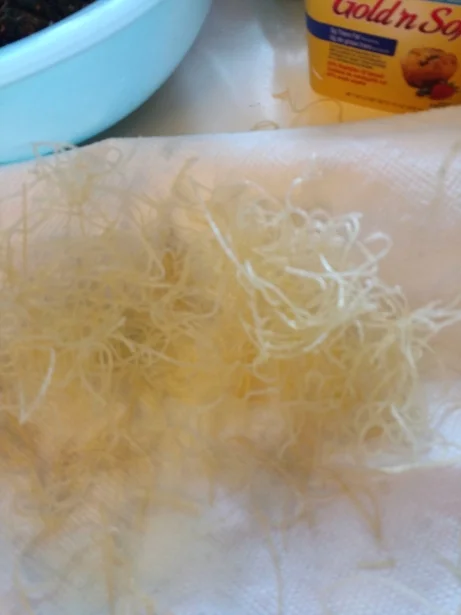KC 118 - Mongolian Beef Burritos

Why Hello there, and welcome to Kitchen Catastrophe’s ongoing event: Mash-Up May, where we take two dishes and MASH them together. Today’s post is a special one, because it’s one of the inciting incidents for the event in question, it has a nice story to it, AND it’s really damn good. Well, kind of. Let’s explore what all of those things mean, with Mongolian Beef Burritos. You can cut the chase and eat up by following this link to the recipe. For everyone else, let’s dig in.
Germination is Less Infectious than you May Believe. Unless You get Hay Fever
So, I’ve given the general process for why I chose to do this month a couple times: I had the idea to do a “Fusion February”, and then changed my mind. Also, despite it being MY story, I somehow got the details wrong. It’s true that I had considered a “Fusion February” event, but the idea came too late. Then I thought “Hey, I could do a Mash-Up March!” So I start considering the idea, turning it over, and I realized that my window was wrong: For something like this, I’d definitely want to involve my generous (intelligent, beautiful) Patreon supporters. And since I was open to write-ins, I thought that would take a two-week window for them to vote. Add to that the time needed to cook all the food, and that would leave me very little wiggle room in the month of February to make it all.
I mean, this calendar even gives me two extra days in the month, and I couldn't fit it all in!
So I decided to shelve the idea and come back to it next year, right up until the end of February, when I wrote up our Wandering America’s Menus: Wyoming post. And, in researching that, I read that one of the restaurants in Laramie Wyoming sells “Mongolian Beef Burritos”. And that name immediately sold me on the idea, for three reasons. First, it’s just a brilliantly simple fusion dish: sauced meat in a burrito. Of course that works! Second, I like both halves of the equation. And lastly, I know that Mongolian Beef is Nathan’s favorite dish at Chinese restaurants.
Nathan, in case you’ve forgotten, is the site’s resident Baron of Breakfast, and my youngest brother. And schedule-wise, this would pan out pretty well, I thought: at the time, Nate and I were just a day or two away from opening a play that would run every weekend in March. Then, we’d have Easter, then probably Easter again. (My family is…weird about Easter.) and THEN it would be his birthday. A cheap yet thoughtful birthday present, and I can make it weeks before May even starts, getting me an edge on the competition! By which I mean ‘My own sense of procrastination!”
"I'll fix it tomorrow morning."
That spark of inspiration in my soul, I promptly threw any thought about any of it out of my head until April. No need to further clog up the already-dangerously packed hallways of my mind for a month or so. So let’s touch on the history of Mongolian Beef.
What do you call it when Chinggis Khan scores? Mon-GOOOOOOOOAAAAAALLLLLLLLLLL
Fun fact: That’s actually how you would say Genghis Khan’s “name”. Second fun fact: Genghis Khan was actually his title, not his name. It means…well, people aren’t 100% sure, but it either means “the Khan from Sea to Sea” or “The Just Khan”. His birth name was Temujin. But, yeah, the G at the front comes from French or Iranian sources translating the name.
You'll note both of those countries are quite far away from Mongolia. This is because everyone who misspelled his name closer to him died.
And I could have told you half of those facts without a single Google search. (Specifically, I could have told you his name was actually Temujin, his title meant something like “Khan from Ocean to Ocean”, and, if prompted, I could have remembered that, “oh, yeah, technically we don’t spell it like it would have been said.”) Because I had to write a report about the dude 19 years ago, and my brain is a warehouse of hazardous materials and ever-expanding clutter.
Also, I just find a lot of the narrative of Genghis and Kublai Khan, and the Khanate in general cool. So if a book or show mentions the Mongols, I’m more likely to pick it up. It’s why I was one of like, 20 people who watched Netflix’s Marco Polo show. (Which is how I knew that Benedict Wong was a rad dude before Doctor Strange came out.) I even watched John Wayne play him in a nuclear-irradiated desert in his last film role!
A movie every bit as dumb as this picture of it implies. Turns out, it's hard to take Mongol Warlords seriously with a thick Southern accent.
So, with that in mind, let’s discuss the origins of Mongolian Beef: It was invented in China. Or maybe Taiwan, assuming you foolishly believe Taiwan is legally or culturally a separate state. HaHA, what ridiculousness! What idiocy! (Hopefully that will be enough to ensure China doesn’t decide to ban me from ever visiting.) But yeah, Mongolian Beef was never actually Mongolian. Instead it’s…complicated.
See…Jesus, this is a mess. There’s a lot of ways I could sum it up that would be humorous, but also more than a little insulting. Basically, China remembers the Mongol invasion and eventual conquest of their nation in somewhat complicated terms. Not unlike Japan does with America’s defeat of their forces and subsequent cultural exchange in World War 2. Yes, the wars involved were devastating in terms of lives lost, and the violent regime changes involved…But following both, the parties involved made efforts to improve the nation they had just so viciously defeated. Not everyone liked the efforts they made, but they acknowledge that at least their opponents weren’t total assholes. As such, Mongolians have a stereotype in China, and it’s basically as “Biker Cowboys”: Mongolians are believed to be tall, and strong, and they supposedly eat big hearty meals with red meat ALL THE TIME.
Just big ol' beer-drinking, wrasslin', ass-kickin' dudes.
As such, it’s quite common for restaurants to call themselves “Mongolian” or call a specific dish “Mongolian”, in the same way that diners and restaurants across America associate themselves with cowboys: it’s a signal for the type of food being made, and an enticement for people looking for filling, seasoned food.
So, yeah, “Mongolian Beef” is like a “Cowboy Steak”. It’s just a kind of generic name meaning “lotta meat, kinda spicy, good honest food.” Let’s take that honest little lie, and made a confused mess out of it, then, shall we?
Time to Wrap it Up! …Get it? Because it’s a burrito.
Not so fast, Title Jon. You can’t really make Mongolian Beef Burritos without making Mongolian beef, so we’re going to have to do that first. Our recipe comes from Spend with Pennies, because they’re the second result when you Google “Mongolian Beef recipe”. Yeah, remember how I said I didn’t think about this plan for at least a month? Turns out, I basically didn’t think about it at all until the weekend before Nate’s birthday, because I was ALSO trying to do a comedy show across the State the night before. A plan that I barely pulled off, but it forced me to delay the meal to Sunday.
In any case, this recipe is…pretty stupidly simple. You make the sauce, you cook the beef, you cook the beef some more in the sauce. Done. Seriously, if we had known Mongolian Beef was this easy, we’d probably have made a lot more of it.
Regardless of how many hefty meat tubes it meant we were sucking down.
Of course, as always happens when someone promises something is super easy, that statement wasn’t totally accurate. There is one mildly annoying step, and that’s slicing the beef and coating it in cornstarch. Why? Because coating meat in cornstarch keeps it a little moister when frying. Spend with Pennies called this “velveting” the beef, which isn’t exactly right, but it’s close enough for the moment. (“Velveting” is a process using a cornstarch-based batter, which we’ll talk about on Thursday.) But, yeah, slicing 1-2 pounds of beef into little dudes and tossing them all in cornstarch is a little irritating. Especially if, like me, you detest the feel of cornstarch.
Making things all the more galling, the sauce isn’t even complicated! You sauté some garlic and ginger, and add soy sauce, water, and brown sugar, and you boil it all for a couple minutes That’s it! It’s a 2-step process that takes maybe 10-15 minutes!
To be fair, it doesn't LOOK like it takes too much time, either.
The next step is the most irritating, if I’m being honest: see, you gotta fry the beef, and then finish cooking it in the sauce. Which means this is a 2-pan operation. So you set the prepped sauce to the side, and heat up another skillet, frying the beef for a couple minutes, and tossing the fried beef into the sauce so you can heat it all together later, along with some green onions.
More than Meats the Eye
Once you’ve got your beef cooking away in the sauce:
I made a ...glaring mistake with this picture.
It’s time to come up with the rest of your burrito. My family decided on 3 extra components. And by “my family” I mean me, because planning these things is my job. We decided on some rice, to absorb some of the sauce and because burritos have rice most of the time. We decided on cellophane noodles (more on that in a second), and a spicy coleslaw to replace the salsa/pico de gallo you’d get in a normal burrito, because Nate hates the taste of cilantro.
Now, if you don’t know what cellophane noodles are, don’t worry. If you order Mongolian Beef at a restaurant, they’re the crispy little noodles that the beef is served on top of sometimes. Also, they are a pain in the butt to find. They’re also called glass noodles, and have a bunch of names across Asia, including Sai Fun and “Chinese Vermicelli” in Vietnamese. However, they aren’t the same as rice vermicelli, so maybe don’t rely on translated Vietnamese when buying your noodles. I couldn’t find ANY that looked right. The only “glass noodles” I found were too wide, and there was no Sai Fun anywhere. There was a package of Mai Fun, so I bought that, since it’s only one letter different, so it must be pretty similar.
Much like that time a woman asked to come over and suck on my sock.
We fried those in olive oil to get crispy and crunchy little noodle nests, and honestly, they turned out mostly okay, by which I mean “sure, I wanted to fry them in vegetable oil, only to discover we had run out while frying the beef, and between this, the beef, and the rice, I’m using 3 burners on a 4 burner stove, because we never actually PLAN these things, I just get told to start, so now I have to do every component at the same time, and I’m standing over three stove burners on a warm April day, so I’m starting to overheat, but at least these noodles are pretty close to the right texture.”
While I was having my oven-based breakdown and trying not to let my frustrated tears embitter the meat sauce, my mother made the slaw. We just bought a bag of coleslaw mix, and tossed it in a sauce of our own making. We mixed together vinegar, mayonnaise, salt, pepper, and a surprise ingredient: diced kimchi! Yeah, we figured with the rich sweetness of the meat sauce, we’d want a little acidic funk to cut through it.
There's certainly some funk going on here.
Once I was done proclaiming “woe is me” in the corner, and the rice finished cooking, we served it up, along with some grilled shishito peppers. After a good 45-50 minutes of flailing around, the results were there to see.
Not that it was very CLEAR to see, given the relatively de-saturated colors of the dish.
The general reaction was as follows: this Mongolian beef recipe is great, this coleslaw is pretty good, and the overall burrito is…fine. Our rice was a little too wet, and while the coleslaw matched the beef well, the burrito needed a third set of flavors, since both the rice and the fried noodles were basically just there for texture. Maybe some Sriracha in the rice or something, or fried rice instead of plain white. Just another layer of flavor to interact with.
Still, we heartily recommend all the components of the burrito, we just needed one more thing in the burrito itself. And that’s a pretty solid birthday gift, and a magnificent mash-up.
If you want to help Jon make more meaty mash-ups, you can support the site through Patreon, or simply by sharing our posts and inviting your friends to like our Facebook page!
THURSDAY: WE’RE GONNA TALK ABOUT VELVETING. MAYBE AS PART OF A BROADER PATTERN, MAYBE NOT.
MONDAY: AMERICA MEETS…AMERICA, AS WE BLEND CREOLE AND HAWAIIAN.
RECIPE
Mongolian Beef Burritos
Serves 6-8
Ingredients
Mongolian Beef
2 tsps oil (vegetable or olive)
½ tsp ginger, minced
4 cloves garlic, minced
½ cup soy sauce
¼ cup water
½ cup packed brown sugar
2 tbsp oil
1 lb flank steak (or whatever beef you like thinly sliced)
1/3 cup cornstarch
2 green onions, sliced
Burrito Components
4 cups prepared
1 recipe Kimchi Slaw. (1 bag coleslaw mix, 1/4 cup diced kimchi, and just mix mayo, vinegar, and spices until it tastes good.)
Sai Fun or Mai Fun noodles, soaked and fried according to package instruction.
Burrito-sized Tortillas
Preparation
1. Heat 2 teaspoons oil in a small pan over medium low. Add garlic & ginger, stir until fragrant, about 1 minute. Add soy sauce, water and brown sugar and bring to a boil over medium heat. Let boil 3-5 minutes or until slightly thickened. Set aside.
2. Slice the flank steak into 1/4″ slices and toss with cornstarch. Gently shake off any excess.
3. Place 1 tablespoon at a time of oil in your pan and heat over medium-high heat. Cook the beef in small batches for about 2 minutes. You’re just browning it for now, as it’ll finish in the sauce.
4. Once all the beef has been cooked, combine with the sauce and heat over medium until hot and bubbly. Remove from heat and stir in green onions.
5. Assemble the burritos. Place a scoop of white rice into the torilla, top with fried noodles, and place scoops of Mongolian Beef on the bed of starches. Top with Kimchi Slaw, roll up, and serve.
















